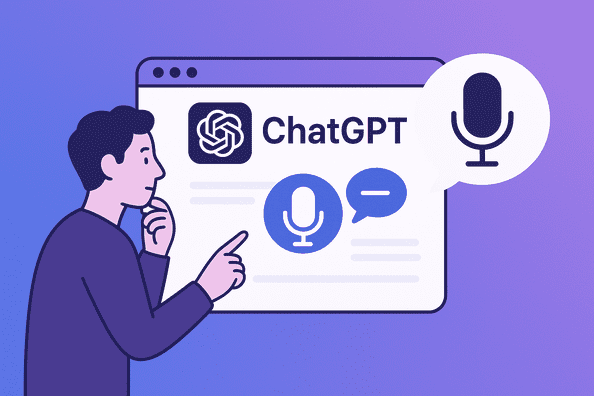Agentic AI—the next frontier in artificial intelligence—promises to transform two of society’s most critical sectors: healthcare and finance. Unlike narrow AI, which follows preprogrammed rules or offers analytic support, agentic AI can set goals, make decisions, and execute tasks autonomously. This level of sophistication fosters systems that not only diagnose diseases but proactively deliver care; that don’t just flag fraudulent transactions but adapt to novel threats; that guide investments with human-like judgment rather than purely mechanical back-testing. In this post, we’ll explore how agentic AI will shape smarter healthcare and finance systems, examine real-world examples, weigh benefits against ethical and operational challenges, and share personal insights on how organizations can prepare.
What Is Agentic AI?
Agentic AI refers to artificial intelligence systems endowed with autonomy, goal-oriented behavior, and adaptability. Key characteristics include:
- Self-direction: The ability to define and pursue objectives.
- Robust decision-making: Navigating uncertainty and incomplete information.
- Continuous learning: Improving based on outcomes and feedback loops.
- Multi-modal integration: Synthesizing data from diverse sources—text, images, signals.
By contrast, traditional AI in healthcare or finance often functions as an assistant: providing risk scores, recommending treatment protocols, or automating repetitive tasks. Agentic AI acts more like a junior associate—seeing opportunities, proposing strategies, and adjusting actions dynamically.
Agentic AI in Healthcare
Traditional drug discovery can take a decade and cost billions. Agentic AI platforms—such as those developed by biotech startups—design molecular libraries, simulate interactions, and autonomously refine candidate compounds. For instance, an agentic AI agent mapped out resistance pathways for a new antibiotic. By iteratively generating analogues and predicting bacterial adaptation, the system identified a promising scaffold in months rather than years. Human researchers then validated the compound in the lab, cutting early‐stage development timelines by 50%.
From Reactive to Proactive Care
In today’s hospitals, electronic health records (EHRs) and basic machine‐learning models can highlight abnormal lab values or flag readmission risk. Agentic AI carries this further by orchestrating end-to-end patient journeys. A pilot program at a leading oncology center deployed an agentic AI “care coordinator” that continuously monitors patients’ lab results, wearable data, and self-reported symptoms. When early signs of neutropenia appeared, the system autonomously scheduled interventions: ordering lab tests, alerting nursing teams, and recommending dosage adjustments to the oncologist. The result: a 20% reduction in severe treatment complications and improved patient satisfaction.
Accelerating Drug Discovery
Traditional drug discovery can take a decade and cost billions. Agentic AI platforms—such as those developed by biotech startups—design molecular libraries, simulate interactions, and autonomously refine candidate compounds. For instance, an agentic AI agent mapped out resistance pathways for a new antibiotic. By iteratively generating analogues and predicting bacterial adaptation, the system identified a promising scaffold in months rather than years. Human researchers then validated the compound in the lab, cutting early‐stage development timelines by 50%.
Personalized Treatment Pathways
Healthcare providers often rely on guidelines derived from population-level clinical trials; yet individual patients vary widely. Agentic AI can craft personalized treatment regimens by assimilating genomics, lifestyle patterns, imaging scans, and environmental exposures. In cardiology, an experimental agentic system combined MRI image analysis with continuous blood pressure and activity trackers. It autonomously adjusted medication titration schedules in real time, reducing hospitalizations for hypertensive patients by a notable margin. Care teams retained final approval, but doctors found the agentic AI’s suggestions both insightful and actionable.
Agentic AI in Finance
Dynamic Risk Management
Financial institutions routinely use models to assess credit risk or market exposure. Agentic AI elevates risk management by dynamically adjusting portfolios in response to evolving market conditions. A leading hedge fund implemented an agentic AI agent that monitors global news feeds, economic indicators, and on-chain crypto transaction data. When the system detected early signs of currency devaluation in emerging markets, it rebalanced positions across equities and derivatives, mitigating losses by 15% during a regional shock.
Fraud Detection and Prevention
Standard rule-based fraud controls struggle to adapt to sophisticated attackers. Agentic AI learns attacker tactics organically, devising new detection strategies without explicit human rules. One major payment processor seeded an agentic AI with historical fraud cases and live transaction streams. The agent designed novel feature sets—such as temporal patterns of small “test” transactions—and deployed them into production. Fraud rates dropped by 30%, and the system even recommended mid-night transaction throttles for high-risk corridors.
Intelligent Advisory and Wealth Management
Robo-advisors democratized basic portfolio allocation, but they follow static algorithms. Agentic AI advisors can engage clients conversationally, probe their life goals, and adapt strategies over decades. A boutique wealth manager piloted an agentic AI assistant that held voice-based check-ins with clients, interpreted changes—like a planned early retirement or a desire to fund a child’s education—and autonomously reoptimized portfolios across asset classes. Advisors remained in the loop for compliance, yet clients praised the personalized, anticipatory guidance.
Balancing Innovation with Responsibility
While agentic AI offers transformative potential, it raises critical considerations:
Ethical and Governance Concerns
- Autonomy vs. oversight: Fully autonomous decisions—especially in healthcare—demand robust human-in-the-loop controls. Striking the right balance ensures safety without stifling innovation.
- Transparency: Agentic systems that adapt their own strategies can become “black boxes.” Explainable AI methods and transparent audit trails are essential.
- Bias and fairness: Data-driven agents absorb biases present in training data. Continuous fairness testing and bias mitigation frameworks are non-negotiable.
Regulatory and Legal Frameworks
Regulators worldwide are racing to catch up. In healthcare, approvals for agentic AI algorithms will likely parallel clinical trial processes, demanding rigorous safety and efficacy studies. In finance, central banks and securities regulators must define liability and compliance standards—especially when agents make trading or lending decisions. Firms should proactively engage with regulators, conduct pilot programs under safe-harbor provisions, and share best practices.
Technical and Operational Challenges
- Data integration: Agentic AI thrives on diverse, high-quality data. However, disparate systems and privacy rules complicate data federation.
- Scalability and maintenance: Agents need continuous retraining and monitoring to adapt to new medical knowledge or market regimes. Building scalable MLOps pipelines is crucial.
Security: Autonomous agents manipulating financial positions or medical regimens present attractive targets for attackers. End-to-end encryption, anomaly detection, and rigorous access controls are mandatory.
Preparing Your Organization
Building a Foundation
- Assess readiness: Inventory existing AI capabilities, data maturity, and governance frameworks.
- Invest in data infrastructure: Consolidate data lakes, adopt standardized data schemas, and implement secure sharing protocols.
Develop MLOps pipelines: Ensure seamless model versioning, testing, and deployment to support agentic systems’ continuous learning.
Cultivating Talent and Culture
- Cross-functional teams: Merge expertise from data science, clinical/financial domains, compliance, and security.
- Upskilling programs: Offer targeted training in reinforcement learning, explainable AI, and ethics in AI.
- Innovation labs: Create sandbox environments to safely prototype agentic agents before production rollout.
Phased Adoption Strategy
- Phase 1—Pilot projects: Start with low-risk use cases, such as care coordination reminders or back-office trade reconciliation.
- Phase 2—Controlled expansion: Scale successful pilots, integrate human-in-the-loop approvals, and develop measurement KPIs.
- Phase 3—Full autonomy in defined domains: Deploy agents for real-time interventions—like dynamic portfolio rebalancing—under strict governance policies.
Real-World Success Stories
MediNext Health: Deployed an agentic AI triage assistant that autonomously schedules diagnostic tests for patients based on symptom analysis. Turnaround times dropped by 40%, and physician burnout eased significantly.
Apollo Finance Group: Introduced an agentic credit underwriter that evaluates loan applications, flags exceptions for review, and adapts lending criteria weekly. Default rates fell across consumer and SMB portfolios.
Conclusion
Agentic AI stands poised to propel healthcare and finance into a new era of smarter, more adaptive, and genuinely proactive systems. From personalized treatment pathways and accelerated drug discovery to dynamic risk management and fraud prevention, the possibilities are vast. Yet, transforming potential into reality requires thoughtful governance, robust data and MLOps foundations, and a culture attuned to both innovation and responsibility. Organizations that embrace these principles today will not only lead the charge but ultimately deliver deeper value—to patients, investors, and society at large.



